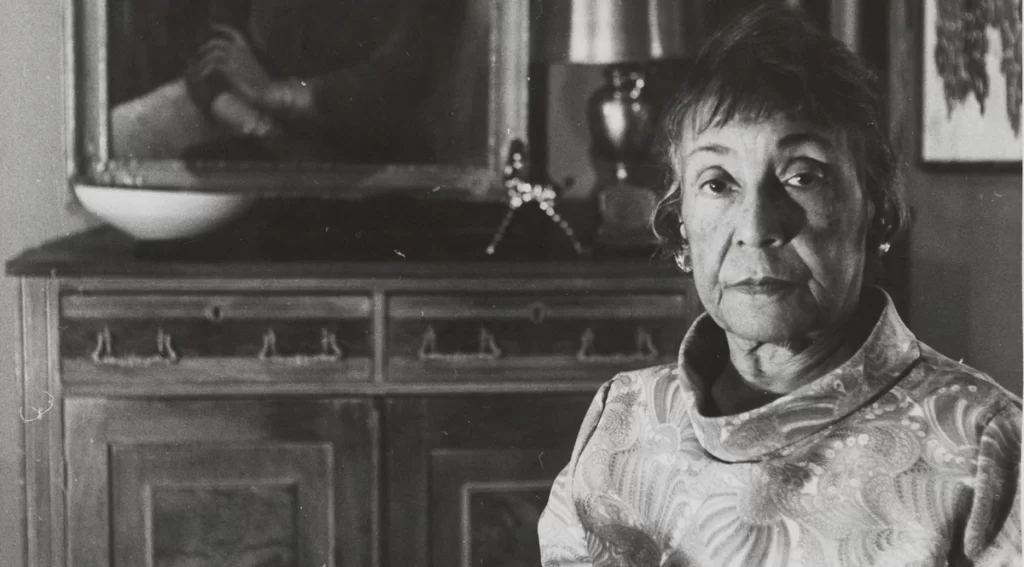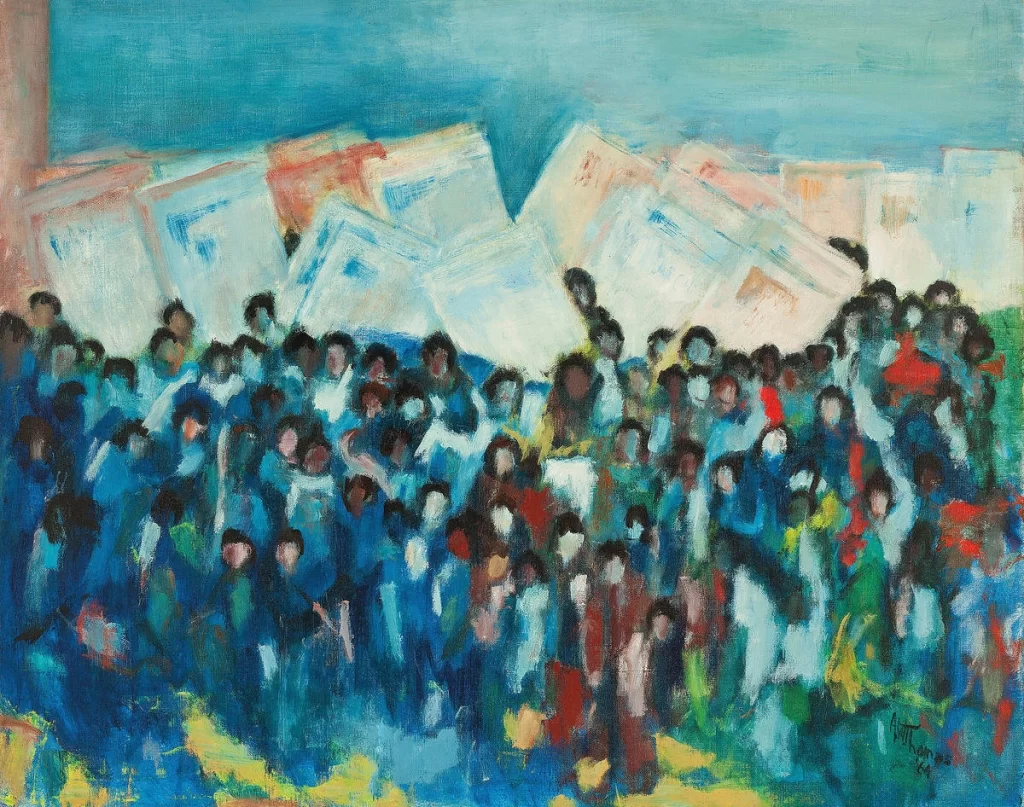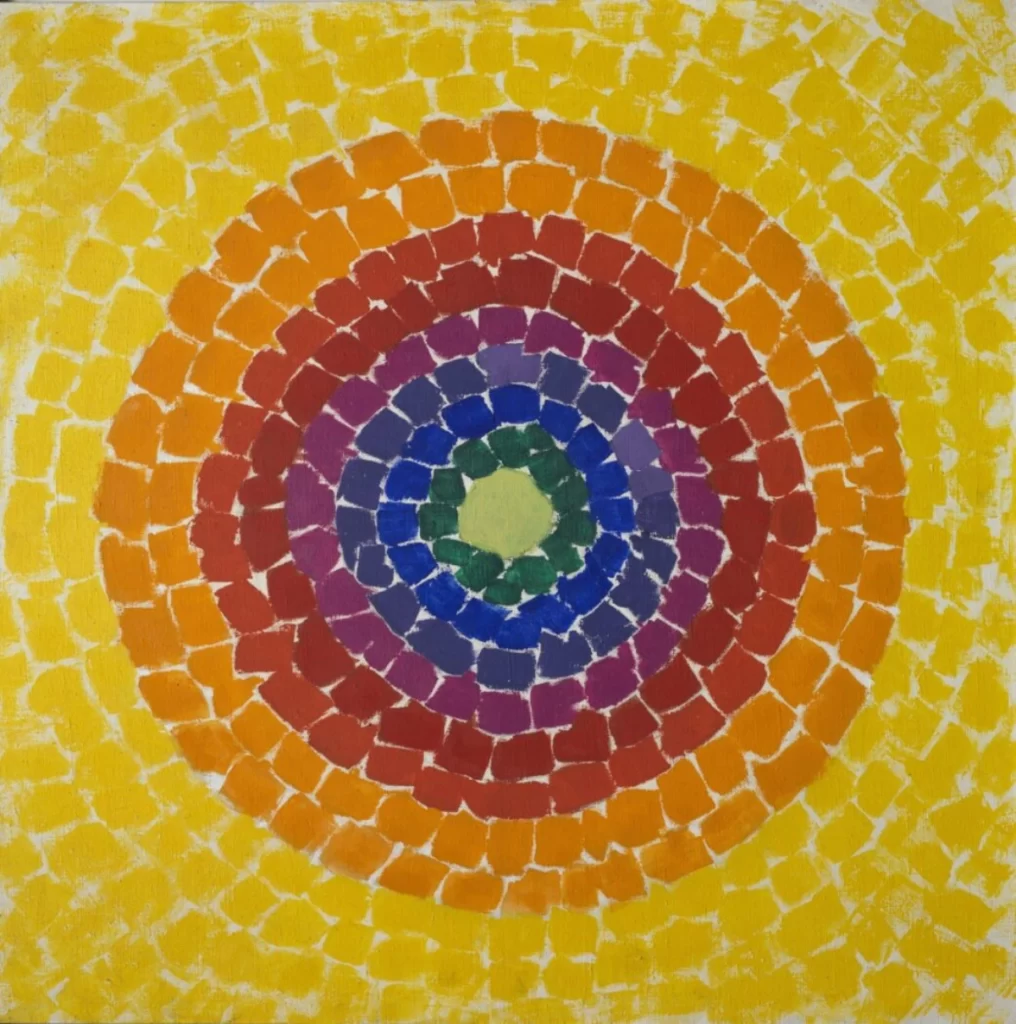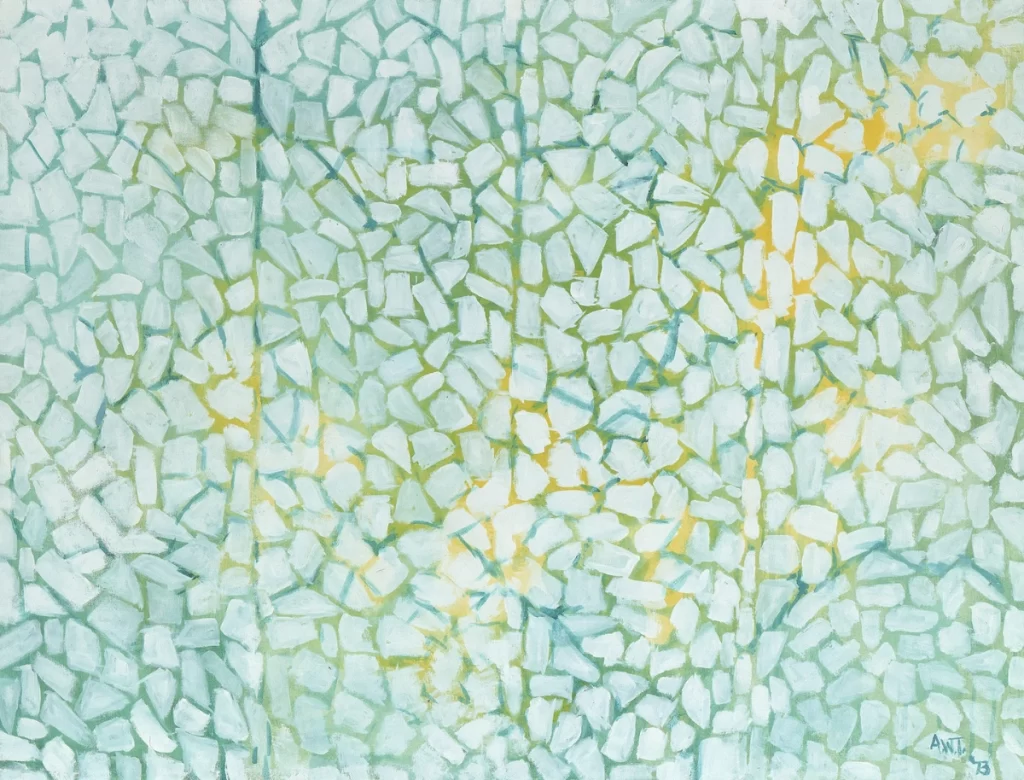Alma Thomas: An Inspiration Amongst African American Female Artists
Alma Woodsey Thomas (1891–1978) was a popular name among the Black artists in history known for her abstract paintings and was a teacher. She was born in Columbus, Georgia, and grew up in Washington, D.C. After deciding to become a teacher, Thomas spent 35 years working as an art teacher in a public school. After retiring from teaching in her 70s, she took up painting seriously. Although Alma Thomas was mainly recognized as an expressionist painter, she was also active amongst the Washington Color School Artists and their movement. Despite the discrimination and segregation prevalent then, she was a thriving African-American woman artist, who was known for celebrating black art and culture.

Courtesy – WETA
Alma Thomas’ Modernist Mosaic Style Art
Complex patterns and vivid colours distinguish Thomas’s style, making her paintings unique, and art lovers and artists have praised her. She frequently created nature-inspired abstract art with visually arresting effects by using quick brushstrokes and arranging colours in geometric forms. Her sculptures are commended for their vibrant, joyful spirit. Alma Thomas held a solo exhibition at the Whitney Museum of American Art in New York City in 1972, making history as the first female African American curator. She won various accolades and prizes for her services to the arts over her career. Her works are kept in prestigious collections and museums around the globe today, and she is regarded as a trailblazer in American abstract art.
Significance of Alma Woodsey Thomas
Racial obstacles were pervasive in art when African American artist Alma Thomas became a teacher and artist. She belonged to the generation of African American artists who used their art to subvert gender and racial stereotypes and were rebellious like art. Thomas was mainly recognized for her abstract compositions, which used vivid, striking colours and were affiliated with the Abstract Expressionist and Color Field painting styles. Her artwork frequently included geometric shapes and rhythmic patterns celebrating colour and form.

Courtesy – National Gallery of Art Custom Print
Thomas’s inventive use of colour is highly praised since it has defined her artistic style, which is considered expressionist and abstract. Her colour scheme, which ranged from deep blues and greens to startling yellows and reds, was frequently vivid and lively. Her fascination with the natural world and its surroundings impacted her use of colour. Alma Thomas was a seasoned educator with a keen interest in both science and the arts. She was inspired by various scientific ideas, such as the universe and the natural world, frequently appearing in her abstract paintings. Her fascination with light, space, and the universe is evident in her vibrant abstract art.
Alma Thomas did not receive much attention during her life, but as her career progressed, more praise was given to her after her death. Her modernist mosaic-style paintings are currently part of important museum collections nationwide, and audiences and artists are still motivated by her legacy. Among the many difficulties Thomas encountered was discrimination based on race and gender. Despite these challenges, she persevered in her artistic endeavours, eventually becoming known for her groundbreaking work. Her narrative serves as a metaphor for tenacity, grit, and the ability of creativity to overcome obstacles.

Courtesy – White House History
“I’ve never bothered painting the ugly things in life. People struggling, and having difficulty. You meet that when you go out, and then you have to come back and see the same thing hanging on the wall. No. I wanted something beautiful that you could sit down and look at. And then, the paintings change you.”
Alma Thomas, ca. 1977–78
Her style was also influenced by Henri Matisse’s later work at the Museum of Modern Art. Her vibrant Watusi (1963) was inspired by The Snail (1952). In her 20th-century art movements’ paintings, she used comparable patterns and shapes. She painted using acrylics rather than cutting out geometric shapes. She also used a jumble of squares, rhombuses, and rectangles in her version, Watusi (Hard Edge). But looking attentively, you’ll see that Thomas turned Matisse’s composition 90 degrees. The medium has shifted from gouache to acrylic on canvas, and the subject matter has evolved. Thomas’s title suggests that the work no longer refers to an animal.
According to Thomas, the purpose of art is to attract the viewer’s sight. “Through colour, I have sought to concentrate on beauty and happiness rather than on man’s inhumanity to man,” she once stated. Thomas’s movement in the painting is like falling leaves or hanging flowers after the climax of art as a teacher.
‘On August 28, 1963, she and her friend opera singer Lillian Evans participated in the March on Washington for Jobs and Freedom. The formidable demonstration pushed for civil and economic rights. Although Thomas rarely made political art, she portrayed the event in the oil painting March on Washington (1964). Her contemporaries felt compelled to speak out against white supremacy and patriarchy. They committed to work promoting Black beauty and Black artists in history. Thomas desired to be solely an artist rather than a Black artist or a woman artist. Her philosophy was that creativity was independent of race and gender’, writes Aleia M. Brown.

Courtesy – Arthipo
“I was born at the end of the 19th century, horse-and-buggy days, and experienced the phenomenal changes of the 20th-century machine and space age. Today not only can our great scientists send astronauts to and from the moon to photograph its surface and bring back samples of rocks and other materials, but through the medium of colour television all can see and experience the thrill of these adventures.”
Alma Thomas, 1972
Alma Thomas has defied expectations and torn down barriers throughout her career. From her early years as a teacher to her subsequent achievements as a painter, Thomas showed an unwavering commitment to originality and creativity. Her particular vibrant abstract art style, distinguished by vivid colours, rhythmic patterns, and an original take on abstraction, fascinates viewers and motivates a new generation of artists.
Thomas’s path demonstrates her creative skill and ability to persevere in the face of difficulty. She disregarded social norms as one of the African American female artists, negotiating the predominantly white and male art industry of the mid-20th century. Her unrelenting commitment to her craft allowed her to carve out a place for herself.
Image – Alma Thomas. White Daisies Rhapsody (1973). Courtesy – Art History Project






